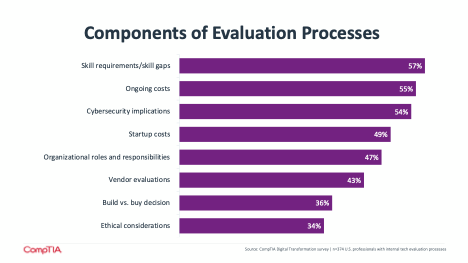 I recently talked with a reporter about overhyped technologies. The topic sure sounds like an interesting one, though I mentioned to the reporter that this might be a tough time to dive into it. Generative artificial intelligence (AI) is taking up all the oxygen in the room, and it’s hard to think of many other technologies getting anything close to the same amount of hype. That’s a different scenario from a few years ago, where we had a whole list of emerging technologies like internet of things (IoT), extended reality (XR) and drones that had organizations wondering about real value vs. overblown promises.
I recently talked with a reporter about overhyped technologies. The topic sure sounds like an interesting one, though I mentioned to the reporter that this might be a tough time to dive into it. Generative artificial intelligence (AI) is taking up all the oxygen in the room, and it’s hard to think of many other technologies getting anything close to the same amount of hype. That’s a different scenario from a few years ago, where we had a whole list of emerging technologies like internet of things (IoT), extended reality (XR) and drones that had organizations wondering about real value vs. overblown promises.
Even if we’re in a bit of a lull right now, the time will come again when we have several technologies competing for attention at the same time. That’s why the interview made me think of technology evaluation. Our recent research on digital transformation (DX) identified the process of evaluation and adoption as one of the five DX components, specifically because organizations need a defined methodology for cutting through the hype.
This process of evaluation and adoption is a new one for many organizations. One typical approach is to build cross-functional teams to bring in different perspectives. As an IT professional sitting on an evaluation team, what role should you play in helping your organization understand the technology on the market and how that technology might be plugged into strategic initiatives? There are three areas where IT pros can contribute to this critical practice.
1. Deep technical expertise. On one hand, this is a bit of a no-brainer. Obviously, IT pros are brought onto these teams in order to contribute their technical expertise. Usually this is technology-specific; IT pros need to describe how generative AI works or what types of sensors might be needed for an IoT implementation.
However, the technical advice needs to go beyond that. I view it as “system thinking.” Are there data requirements that might change the storage architecture? How much additional infrastructure is needed to support a use case? Perhaps most importantly, what are the cybersecurity implications?
These system-level questions are the ones that make or break the transition of a technology from a promising concept to a productive tool. The ability to think broadly and connect the dots for potential implementation is a key way to add value.
2. Awareness of second-order effects. As technology has scaled in both size and importance, organizations (and society at large) are quickly learning about unintended consequences. For example, social media introduced new ways to connect people and launched the model of user-generated content, but it also has had an impact on democratic processes and mental health.

IT pros need to help their organizations think through these questions as much as possible. Looking at the typical components of an evaluation process cited by respondents to CompTIA’s survey, some of these questions are related to total cost of ownership (TCO). Filling any skill gaps, accounting for ongoing costs vs. startup costs and choosing to build or buy all impact the bottom line.
Beyond TCO considerations, IT pros can help guide conversations in other areas. Establishing roles and responsibilities for new technology will help define who makes the final call on specific decisions. Brainstorming around ethical considerations can help reduce bias in data training or identify potential misuses of technology. Technology is not just about the technology anymore, and IT pros are in a good position to bring these second-order issues to light.
3. Analysis of business value. Obviously, the ultimate goal for everyone sitting at the table in evaluation discussions is to build business value. Whether that is growing revenue, expanding into a new market, understanding customers better or some other objective, there will be something that the organization is hoping to achieve by leveraging technology in a new way.
IT pros might not have the deepest knowledge around how business value is created compared to their counterparts in line-of-business departments, but there is a critical bit of information that no one has much background in evaluating. The shift towards strategic IT has driven demand for more accurate return on investment (ROI) calculations around technology, since technology is being used to drive goals instead of just being a cost center.
IT pros are best suited to fill this particular gap. They have the best knowledge of the investment part of an ROI equation, and they can collaborate with their peers and build their own business acumen to calculate the return. This will likely be an iterative process, as IT pros learn exactly how technology contributes to business processes.
I can’t imagine that we’ll ever get to a point where the hype cycle around technology completely calms down. Building a robust evaluation process, though, might help organizations guard against excessive hype by asking the right questions. With some practice and a few additional skills, IT pros can be the ones providing the answers.
CompTIA is here to support you throughout your IT career. Get free resources, career advice, and special offers on CompTIA training and certifications!

